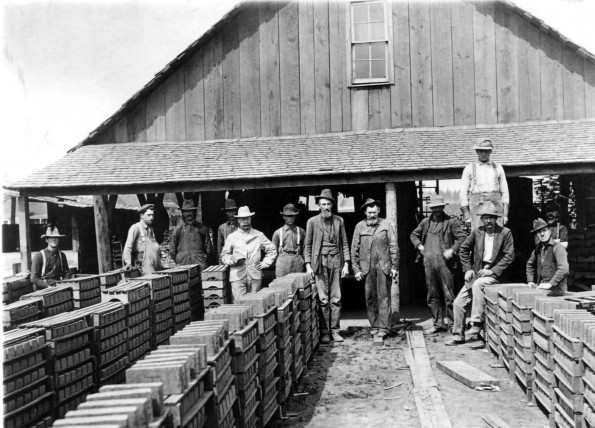The name Hidden has been prominent in Vancouver since the city was a fledging village in the 1860’s — and with good reason.
The contributions of the Hiddens are seen everywhere, from the bricks which went into the stately St. James Cathedral to the preservation of beautiful Providence Academy.
Lowell Mason Hidden was the first here, arriving as a young man from New England in about 1864. He was born in Vermont in 1839.
Hidden worked first for Gay Hayden, for whom Hayden Island is named, earning enough money to purchase land on the west side of Main Street from 13th to 19th street for $500. He built his first home, a log cabin at 14th and Main, about 1865.
Hidden returned to Vermont in 1869 to marry Mary Sherbon Eastman, and he brought her back to Vancouver. Accompanying the newlyweds back to Vancouver was Lowell’s oldest brother, Arthur.
They rented a hotel, the Pacific House, and operated it from 1870 to 1871. Lowell organized Hidden Brick Co. in 1871, just in time to provide the building material for Mother Joseph’s Providence Academy.
Hiddens’s success encouraged other members of the family to come west to Clark County. They were his brothers Oliver, who was to become a noted architect here, and Jackson, a fruit grower.
Meanwhile, Arthur Hidden planted the area’s first prune orchard at 26th and Main, and he built and operated a big prune dryer there. He is known as the father of Clark County’s gigantic prune industry.
Lowell Hidden’s first brickyard was at 15th and Main. It has been estimated that 60 milion bricks were manufactured there, forming the building material for most of Vancouver’s beautiful downtown buildings, including Providence Academy, built in 1873, and St. James Catherdral, which was built in 1885 with 900,000 Hidden bricks.
Later, the Hiddens purchased 10 acres at 26th and Kauffman, which was to become the site of the family brickyard which is still in operation.
Lowell had his hand in many other enterprises, including the construction of the Portland, Vancouver and Yakima Railroad to the Yacolt area, and the operation of a flour, feed mill and dock on the Vancouver waterfront.
Lowell, Arthur and Oliver formed a partnership in 1890 and built the Columbia Hotel at Third and Main. This four-story brick building boasted the county’s first elevator and telephone booth. It was opened with great public fanfare, and 48 turkeys were roasted for the gala occasion.
Lowell Hidden also found time to serve on the City Council and County Commission. He is remembered for donating the property at 16th and Main for a public library, a brick building which now houses the Clark County Museum. He is credited with initiating Vancouver’s first street railway, the city water system north of 13th Street, the State School for the Deaf, the county fair and one of the city’s first banks.
Lowell and Mary’s sons, W. Foster and Oliver Hidden, took over the brickyard business in 1905 and carried on with this and other Hidden enterprises after Lowell’s death in 1923. The partnership of the two brothers continued until Oliver’s death in 1940.
W. Foster Hidden died in 1963. His son, Robert Hidden, continued with the brickyard business and is known for his philanthropic and community activities. He perhaps is best known for purchasing the Providence Academy in 1969, saving the historic structure from destruction.
